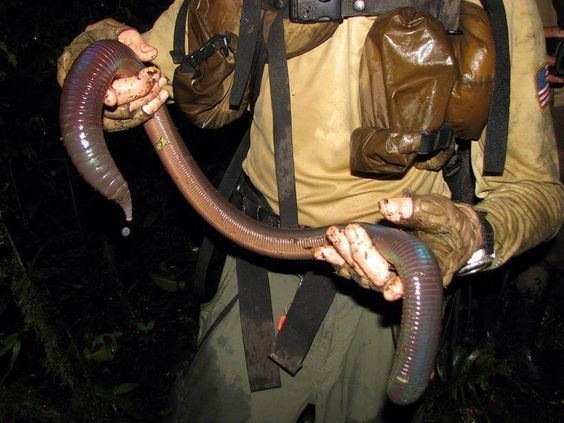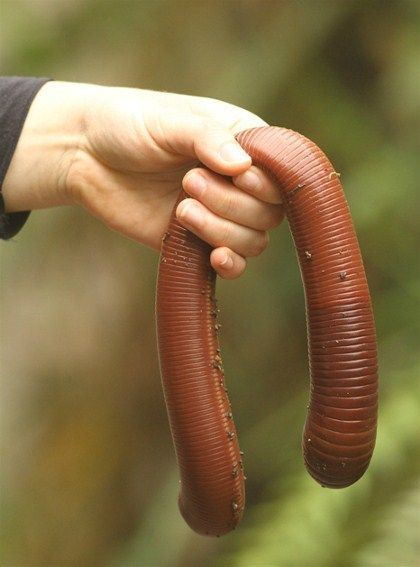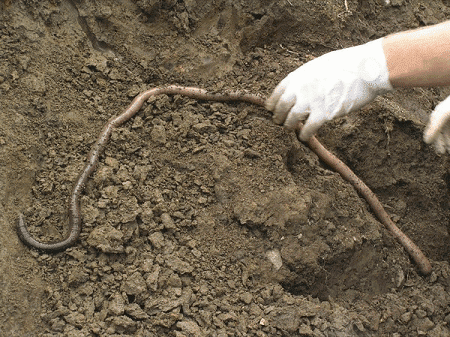Genus Megascolides Higher classification Megascolides Rank Species | Scientific name Megascolides australis Subclass Oligochaeta | |
 | ||
Similar Giant Palouse earthworm, Glossoscolecidae, Oligochaeta, Megascolecidae, Microchaetus rappi | ||
The giant Gippsland earthworm, Megascolides australis, is one of Australia's 1,000 native earthworm species.
Contents
Description
These giant earthworms average 1 metre (3.3 ft) long and 2 centimetres (0.79 in) in diameter and can reach 3 metres (9.8 ft) in length; however, their body is able to expand and contract making them appear much larger. On average they weigh about 200 grams (0.44 lb). They have a dark purple head and a blue-grey body, and about 300 to 400 body segments.
Ecology

They live in the subsoil of blue, grey or red clay soils along stream banks and some south or west facing hills of their remaining habitat which is in Gippsland in Victoria, Australia. These worms live in deep burrow systems and require water in their environment to respire. They have relatively long life spans for invertebrates and can take 5 years to reach maturity. They breed in the warmer months and produce egg capsules that are 4 centimetres (1.6 in) to 7 centimetres (2.8 in) in length which are laid in their burrows. When these worms hatch in 12 months they are around 20 centimetres (7.9 in) long at birth.

Unlike most earthworms which deposit castings on the surface, they spend almost all their time in burrows about 52 centimetres (20 in) in depth and deposit their castings there, and can generally only be flushed out by heavy rain. They are usually very sluggish, but when they move rapidly through their underground burrows, it can cause an audible gurgling or sucking sound which allows them to be detected.
Threatened status

As with many of Australia’s native species, European colonisation has resulted in the decline of the giant Gippsland earthworm and they are now a protected species. Some farmers in the area have stopped raising cattle and have begun planting crops. When the farmers till the ground many of the worms are severed, and some scientists believe that worms are killed as a result of the tilling. The species has survived this massive change because it can burrow deep into the soil. However, due to the effects of farming it is still considered a threatened species. Other contributing factors are their low reproductive rate and slow maturation. No successful breeding has yet been achieved in captivity.
Education
Until it closed in 2012 amid animal welfare concerns, Wildlife Wonderland Park near Bass, Victoria, was home to the Giant Earthworm Museum. Inside the worm-shaped museum, visitors could crawl through a magnified replica of a worm burrow and a simulated worm's stomach. Displays and educational material on the giant Gippsland earthworm and other natural history of Gippsland were also featured.

